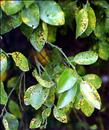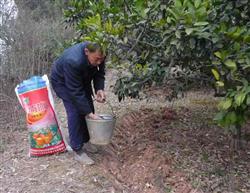How to manage growing oranges in summer?

How to manage growing oranges in summer? Please introduce the management of planting citrus in summer with reference to the following methods: first, with high temperature in summer and more Rain Water, citrus is easy to produce a large number of summer shoots, consume a lot of nutrients, aggravate the second physiological fruit drop, and allow the summer shoots to grow. it may lead to a reduction in yield or even no harvest, so spreading summer shoots is the most effective measure for fruit preservation, generally speaking, young and middle-aged trees entering the fruiting period. Due to less fruit hanging, strong trees and more summer shoots, we should pay more attention to timely wiping. When summer shoots grow 7~10cm, wipe them all from the base, wipe them again at intervals of 5-7 days, thoroughly wipe them again in early August, and then put autumn shoots again. Trees that enter the full fruit period, or trees with more fruit, have a small number of summer shoots, so they should wipe buds in time and put autumn shoots again in late July, so as to lay the foundation for stable production next year. Second, the application of strong fruit fertilizer in late June, the second physiological fruit drop of citrus is basically over, and the number of hanging fruit per plant is basically determined. when the fruit turns into the expanding growth period, it needs a lot of water and nutrients, so it is necessary to apply strong fruit fertilizer in time, and the compound fertilizer containing potassium sulfate is the best. the trees with more than ten years old or those with more than 400 fruits are applied 2 jin per tree, and the young trees or the trees with less fruit are decreasing according to the tree age and fruit yield. You can also choose 50 jin of soil and miscellaneous fertilizer, half jin of urea and half jin of superphosphate. Early-maturing varieties can be selected from late June to early July, while mid-late-maturing varieties are carried out in the first and middle of July. On one side of the crown, deep 30cm, wide 20cm and long 100~120cm are dug, and the topsoil is well mixed with fertilizer. The weeds around the tree plate are buried at the bottom of the hole, and then the heart soil is backfilled, do not scatter. Third, the prevention and control of diseases and insect pests in May is the period when the first generation of larvae of citrus scale insects, whiteflies and red spiders are concentrated. Pay close attention to both sides of the leaves by hand and apply medicine in time if there are more than 2 red spots on your hands. Red spiders use 73% ketotert 2500 times or 5% nisoron EC 2000 times, scale insects and black whiteflies 1500 times or 2000 times the solution of paracetamol. The period from May to July is the spawning period of longicorn beetles, the first is to kill adults in time, the second is to brush the trunk with lime to resist longicorn beetle spawning, and the third is to check the trunk in time, once wet or sawdust is found, first kill the larvae with wire hooks, and then fill the hole with poisonous cotton. June to July is the key time to control rust insect lice, especially in the orange orchard which has the harm of this insect in the previous year, it is necessary to choose 2000 times of 15% acaridin EC or 73% g of acaroid 2500 times. Click to get more citrus planting techniques click to get more fruit planting techniques
- Prev

What is citrus oil spot?
What is citrus oil spot? Please introduce that citrus oil spot is a physiological disease. at present, there is not a targeted drug to control it, but it can only be prevented and treated seriously in production and harvest. The main methods are: ① tries to avoid picking fruit immediately after rain and morning dew or strong wind.
- Next

What are the fertilization methods for growing oranges?
What are the fertilization methods for growing oranges? Please give an introduction to the following fertilization methods for citrus planting: (1) Root application: most of the citrus roots are distributed in the soil layer of the drip line on the outer edge of the crown, and the location of fertilization should be in the soil of the drip line outside the crown. The depth of fertilization is generally 20-40 cm.
Related
- Moge, come on! The staff of the peasant association in the producing area of cantaloupe were frightened when the crowd gathered.
- Causes and Solutions of low Fruit setting rate of Apple
- Symptoms and control measures of passion fruit virus disease
- Fruit growing lesson: how do apple orchards keep high yields?
- Can you build orchards in the mountains? What are the pros and cons?
- How to manage the coloring period of Crisson grape?
- This paper introduces the processing technology of two kinds of fig products.
- How much is a month for retired teachers in rural areas by 2020?
- How can strawberry planting increase sugar content? We should pay attention to management in many aspects.
- What are the cultivation techniques on how to improve the yield of golden fruit?

